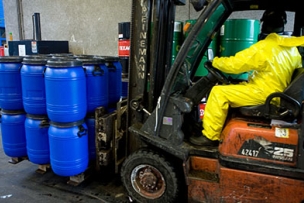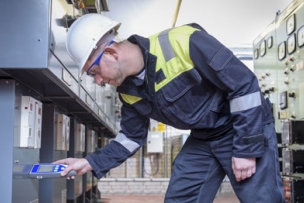In today’s complex manufacturing environments, where metalworking teams might work side by side with electronics component groups, managing electrostatic discharge can be important to ensure worker and equipment safety.
Often metalworking and manufacturing facilities do not focus too extensively on ESD, or “electrostatic discharge,” grounding requirements. The emphasis is on lockout/tagout practices to avoid injuries, which makes sense given LOTO ranks No. 4 on the Occupational Safety and Health Administration’s Top 10 list of violations.
Typically, there is the belief that only plants that build electronics and technology components or those that have stockpiles of explosive chemicals or sawdust residue need worry about static discharge. “In reality, most manufacturing facilities have to keep an eye on ESD,” points out a myth-busting article by Kimco Distributing.
Why? The use of more electronics in the equipment used and maintained on the modern shop floor (think robotics and the latest CNC machines), coupled with the growing complexity of what manufacturers produce, can introduce the need to consider ESD protection training. Plus, the possible use of highly flammable chemicals in some metalworking facilities can magnify the need for grounding.
“Although static shocks themselves may not be very painful, they can cause serious injuries and health complications when allowed to escalate,” explains an Antistat blog post. “In extreme circumstances, static shocks can even cause fires and severe electrical shocks.”
ESD Protection 101: What Is Grounding?
Grounding is essentially any method that keeps processes and materials at the same electrostatic potential.
“Electrostatic charge is most commonly created by the contact and separation of two materials,” explains the ESD Association’s “An Introduction to ESD.” For instance, a worker’s shoes as they cross the plant floor generate static. And, ESDA notes, “dissimilar materials tend to liberate higher levels of static charge.”
Grounding provides paths to reduce such static accumulation or generated charge.
Safety procedures to ensure grounding are called ESD control programs and follow six steps:
- Plan work processes to reduce ESD risk.
- Define the controls you need in your facility.
- Identify the areas where ESD controls will be needed.
- Reduce ESD generation wherever possible.
- Dissipate and neutralize ESD.
- Protect people and products from ESD.
Matting can do more than just protect from ESD. Find out how in “5 Ways the Right Floor Mats Can Help Reduce Workplace Injuries.”
What Are the ESD Requirements?
A useful source of standards information is the ESD Association.
“Determining the product sensitivities within the facility and then mapping this information helps in choosing the right materials to keep each work area under control. Using the ESDA or other related standards will help your ESD control program comply with industry-accepted requirements and procedures that govern the materials, products, systems or processes,” notes the white paper “ESD Control Standards: Setting Up an ESD Control Program.”
Obviously, if your facility produces electronics, the requirements will be more extensive, but understanding the basics will be helpful in most manufacturing environments. The use of ESD controls when needed will keep workers safe but also protect expensive equipment from damage.




Talk to Us!
I need ESD safety solutions in battery manufacturing
17Leave a reply
Your email address will not be published. Required fields are marked *